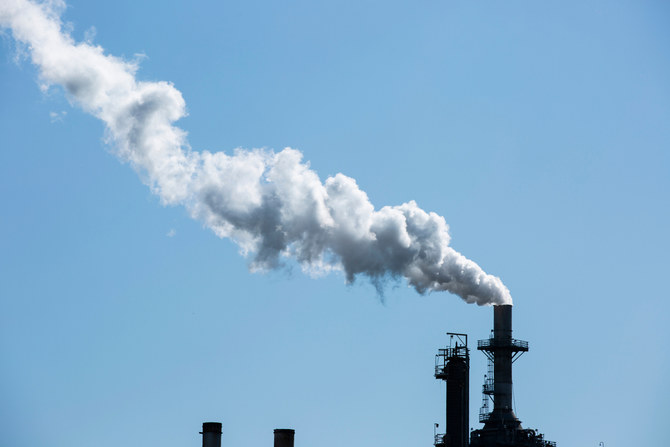
LONDON, Jan 12 (Reuters) - U.S. energy-related carbon dioxide emissions are forecast to rise this year and next as strong economic growth overwhelms increases in energy efficiency, deployment of renewables and roll-out of electric vehicles.
The anticipated increase in emissions shows the United States is far off track to reach net zero by 2050, despite ambitious statements by top policymakers in the Biden administration.
Energy-related emissions are set to rise by 87 million tonnes this year and another 25 million tonnes in 2023, according to the latest forecasts from the U.S. Energy Information Administration (EIA).
Based on detailed modelling of energy consumption by fuel, emissions are predicted to be 4.97 billion tonnes in 2023, up from 4.86 billion in 2021, though still down from a peak of 6.02 billion in 2007.
Between 2007 and 2023, the EIA predicts emissions will have fallen at an average rate of just 65 million tonnes per year (“Short-Term Energy Outlook”, EIA, Jan. 11).
But to achieve the net zero target, energy-related emissions would then need to fall by 184 million tonnes per year between 2023 and 2050, almost three times as fast.
So far, most of the emissions reductions have come from replacing coal-fired power generation with gas-fired generation plus renewables.
Coal-related emissions have declined at an average rate of 74 million tonnes per year since 2007, while gas emissions have grown 24 million tonnes per year.
Oil-related emissions have fallen at an average rate of 15 million tonnes per year, but are still forecast to be 2.3 billion tonnes in 2023, making them the single largest source of CO2 emissions.
Coal to gas switching in power generation has been relatively straightforward since both are very mature technologies with similar characteristics from a consumer’s perspective (https://tmsnrt.rs/3qtGJux).
However, with coal-related emissions down to less than 1 billion tonnes per year in 2022 and 2023, from almost 2.2 billion in 2007, the scope for further reductions from coal-to-gas switching is limited.
Much deeper and more complex decarbonisation policies will be needed to get anywhere close to meeting the net zero target, implying a much more profound transformation of the energy and socio-economic systems.
Nothing in the experience of the last 14 years suggests deep decarbonisation on the scale envisaged is likely to begin in the near term.
Policymakers and climate campaigners are likely to stick with the net zero by 2050 target for the time being to mobilise support and inject a sense of urgency into emissions reductions.
But the relatively slow pace of reductions so far suggests the target is already slipping out of reach and will need to reset later this decade.
Related columns:
- IEA’s roadmap shows difficult journey to net zero (Reuters, July 30) read more
- U.S. net zero goal implies energy system transformation (Reuters, April 21) read more
- Global CO2 emissions far off net-zero trajectory (Reuters, April 12) read more
- Climate change targets are slipping out of reach (Reuters, April 16, 2019)
- John Kemp is a Reuters market analyst. The views expressed are his own












